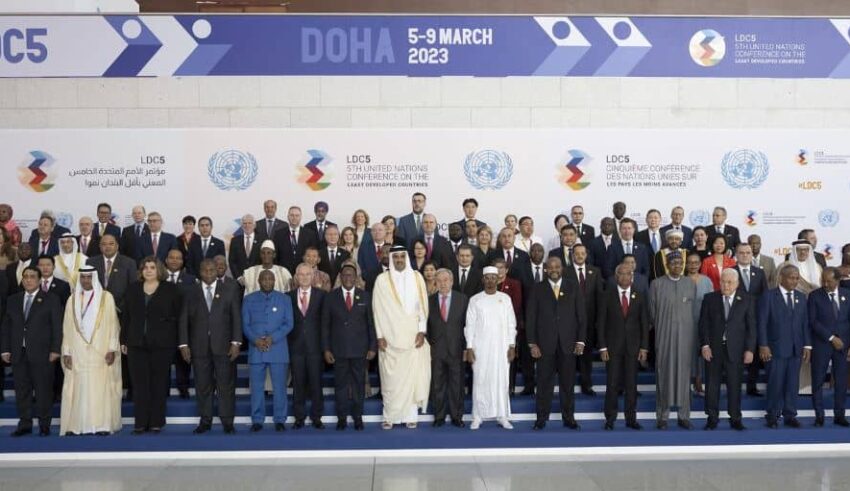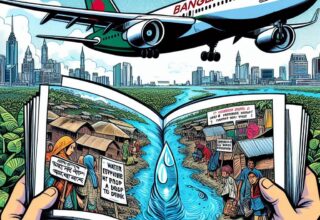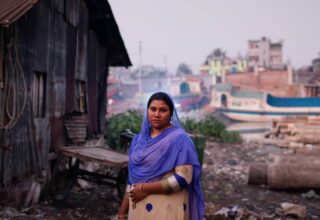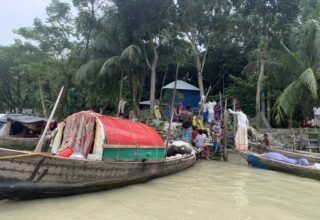The Fifth United Nations Conference on the Least Developed Countries (LDC5) concluded in Doha, Qatar on 09 March 2023. The event attended by around 5,000 participants, including 47 heads of state or government and 130 ministers and vice ministers, adopted the Doha Political Declaration. The declaration commits to implementing the Doha Programme of Action (DPoA), a ten-year plan to put the world’s 46 most vulnerable countries on track to achieving the Sustainable Development Goals (SDGs). Under the theme “From Potential to Prosperity”, the Conference aimed to positively impact the 1.2 billion people in the LDCs. Corporate leaders, civil society, youth and other partners shared plans, innovations, and recommendations in several areas, from enhancing the participation of LDCs in international trade and regional integration for addressing climate change to strengthening global partnerships, supporting graduation, and leveraging the power of science, technology and innovation. The programme, agreed upon in 2022 after LDC5 was postponed due to Covid-19, outlines an agenda for effective DPoA implementation.
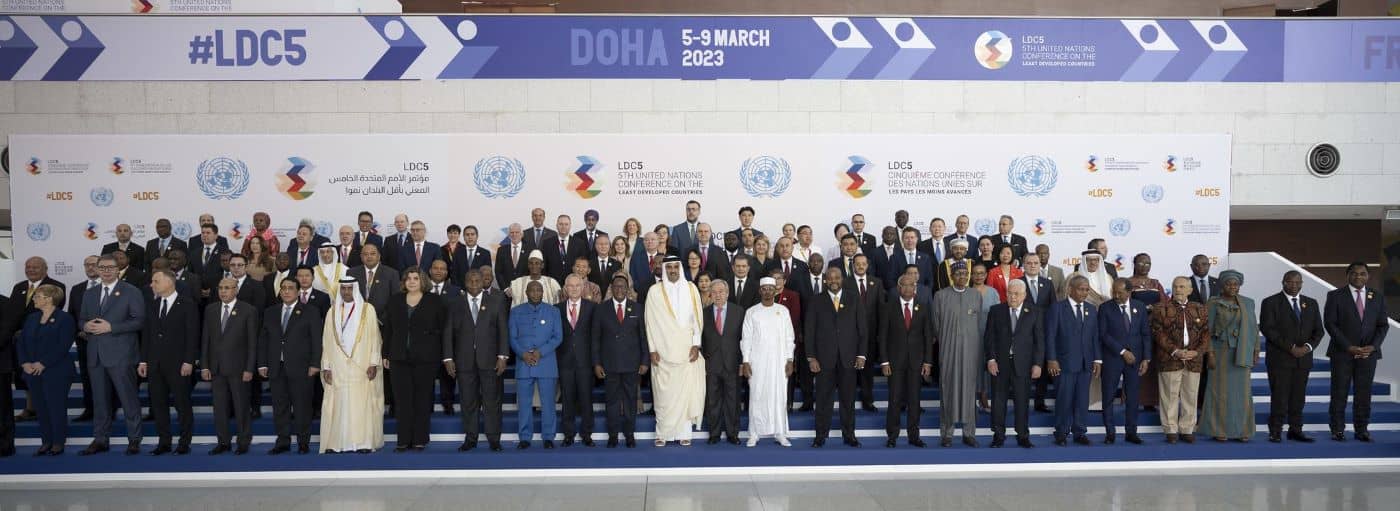
Doha Programme of Action
Discussions at LDC5 centred on the delivery of the DPoA for the LDCs for the decade 2022-2031, which aims for a new generation of renewed commitments between the LDCs and their partners, including the private sector, civil society and governments. The Declaration reiterated measures including the development of a food stock mechanism, an online university focusing on STEM education, especially for women and girls, an international investment support centre, a sustainable graduation support facility, and comprehensive multi-hazard crisis mitigation and resilience-building measures for LDCs.
The DPoA for the Decade 2022-2031 was agreed upon during the first part of the LDC5 Conference in March 2022 in New York. It consists of six key focus areas: eradicating poverty, leveraging the potential of science and technology to fight against multidimensional vulnerabilities to achieve the SDGs, addressing climate change, environmental degradation, recovering from Covid-19 and building resilience against future shocks.
Resource commitments
Over $1.3 bn was pledged, including Germany (€200 mn in new money in 2023); Canada ($35 mn for vitamin supplements in 15 LDCs and $25 mn for ecosystem and biodiversity in Burkina Faso); the EU Commission (investments of more than €130 mn); and the Green Climate Fund (a new project with $80 mn in equity to offer green guarantees to businesses in LDCs). Additionally, the UN World Tourism Organization announced a new €10 mn Tourism for Development Fund for LDCs. Besides, few developing countries including the host Qatar announced a financial package of $60 mn ($10 mn to support the implementation of the DPoA and $50 mn for building resilience in the LDCs). Saudi Arabia announced a major new loan package for the LDCs, and Kazakhstan pledged $50,000 to continue their work supporting the LDCs. Finland also announced an annual event called the UN LDC Future Forum in Helsinki, with the UN Office of the High Representative for the Least Developed Countries, Landlocked Developing Countries and Small Island Developing States to ensure the latest thinking and research on the most vulnerable states.
Reality Check
The 46 LDCs comprise about 14% of the global population, but account for only 1.3% of global GDP, receiving just 1.4% of total foreign direct investment and trade is under 1% of world merchandise exports. LDCs are a diverse group – coming overwhelmingly from Africa – with some on track to graduation in few years. Over a billion people inhabit the LDCs, which contribute the least to existing global crises. The group as a whole contributes to just 1% of global emissions but are the frontline victims of climate change impacts.
The resource endowments and economic structures differ, but the three criteria unite them to be grouped as LDCs: a) per capita GDP; b) index of human assets and c) vulnerability to external economic shocks (EVI). LDCs command only 3.27% of voting power at the IMF and 3.78% at the World Bank, making them victims of an unequal and unjust world order. The challenge now is to change the narrative from victimhood to active agents of change through influencing the debates on the global crises. Over time, aid to LDCs has declined and falls short of the 0.15-0.2% target adopted during LDC1. However, some development partners from the EU have reached the target, while others lag far behind. In recent years, ODA to LDCs has declined from 1% to o.8% of the industrial county GNI. This means during the last four decades, LDCs are just halfway to achieve the set target.
Way forward
LDCs are recognized as having a special status because they have contributed the least to the triple sustainability crises, yet they are the most vulnerable to global and domestic inadequacies. At the same time, they face barriers to participating and influencing global governance processes that significantly impact them.
LDCs must be part of the solution towards sustainable pathways for development that ensure the right to development for all and to ensure that SDGs are achieved in line with planetary boundaries. Development agency reports, such as UNCTAD, recommend a number of actions to reach this goal. These include effective debt relief and management, as many LDCs are at risk due to continued fallout from climate change and Covid-19. Export diversification, stronger productive capacities, and a new strategy to enable LDCs graduation are also necessary. Additionally, financial and technical support should be provided to create enabling environments for increased investment capacity in LDCs. Finally, a just, balanced, and sustainable low-carbon transition in LDCs is essential.
Recommendations for LDCs’ home fronts include investing in policy research and analysis to improve LDC agendas, bargaining hard in alliance with like-minded groups, ensuring continued quota-free access of all LDC exportables to markets in the Global North, and increasing the active participation of LDC diplomats, government officials, and CSO representatives in global forums. Moreover, articulating national interests based on domestic consensus can legitimize the voices of LDC diplomats, improve their capacities for effective policymaking, and establish impactful solutions to address development, environment, and social priorities in LDCs. This should include a focus on locally-led adaptation and empowering marginalized groups such as women and youth. Other recommendations include including the Global LDC Chair as a member of forums such as the G20 and cultivating media both nationally and globally.
About The Authors
Prof Mizan R Khan is deputy director at the International Centre for Climate Change and Development (ICCCAD), and technical lead of the LDC Universities’ Consortium on Climate Change (LUCCC)
Md Fahad Hossain is programme coordinator of LUCCC and LDC Programme on Loss and Damage (LPLD) at the ICCCAD

